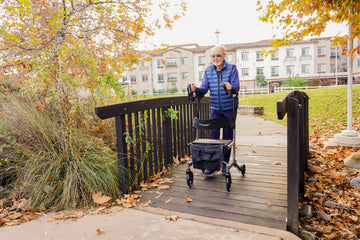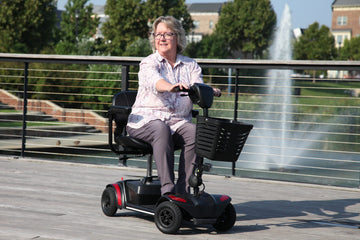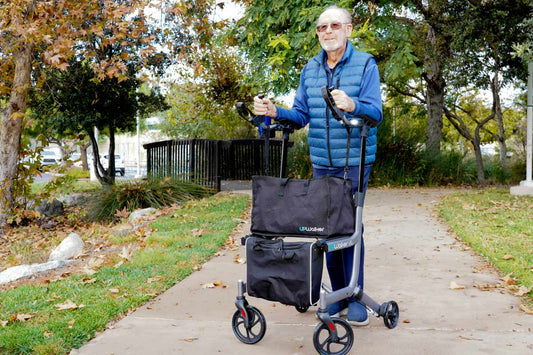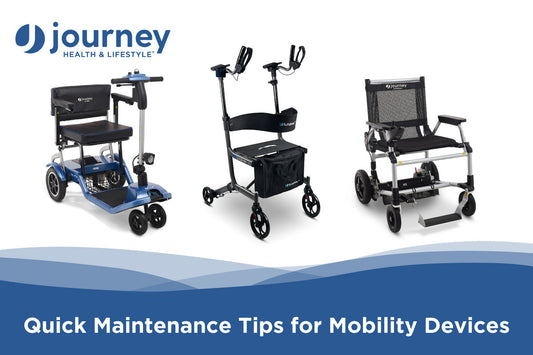M-F 9:30am - 7pm EST
Understanding Walking Aids: Canes, Walkers, and Rollators
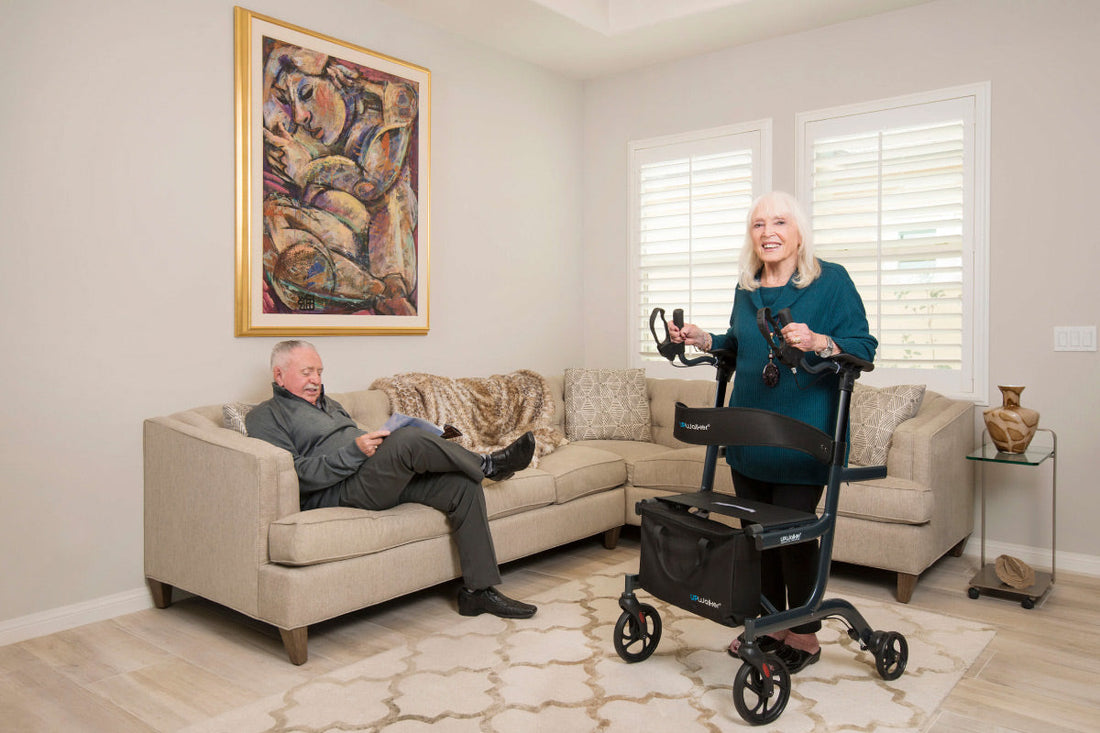
Maintaining independence and mobility is a key priority for many older adults. Walking aids such as canes, walkers, and rollators play a crucial role in supporting these goals.
As individuals age, changes in balance, muscle strength, and joint health can increase the risk of falls and limit daily activity. Research has demonstrated that mobility aids enhance safety and enable seniors to remain active and socially engaged, thereby improving quality of life.
Why Walking Aids Matter
Walking aids are essential tools for many older adults, providing support and stability as physical changes occur with age. The right device can significantly reduce the risk of falls, restore confidence, and help maintain independence.
Choosing the right walking aid is a complex process that must account for the user’s physical abilities, cognitive status, and the environments in which the device will be used. Each type of walking aid offers distinct advantages tailored to different mobility needs.
Types of Walking Aids
Here's a quick overview of types of walking aids:
Single-Point Cane
- Key Features: Lightweight, one-point base, easy to use.
- Best For: Mild balance issues, occasional support.
- Limitations: Least stable option; lacks a seat or storage.
Quad Cane
- Key Features: Four-pronged base for increased stability.
- Best For: Individuals requiring extra steadiness or walking on uneven surfaces.
- Limitations: Heavier and bulkier than a single-point cane.
Standard Walker
- Key Features: Four legs, no wheels, must be lifted with each step.
- Best For: Significant support needs, severe balance issues.
- Limitations: Slower pace, requires upper body strength and coordination.
Folding Walker
- Key Features: Collapsible for transport, some models include wheels.
- Best For: Moderate to high support needs, portability.
- Limitations: May be less stable than a standard walker.
Rollator with Seat
- Key Features: Four wheels, hand brakes, built-in seat, storage basket or pouch.
- Best For: Longer distances, frequent rest breaks, moderate to severe balance issues.
- Limitations: Heavier, requires grip strength to operate brakes.
How to Choose the Right Walking Aid
Selecting an appropriate walking aid requires careful consideration of several important factors. First, it is essential to determine the level of support needed. Canes generally offer minimal support and are suitable for those with mild balance issues, while walkers and rollators provide greater stability for individuals who require more assistance.
Physical abilities should also be assessed, including upper body strength, grip, and endurance. Some walking aids, such as standard walkers, demand more physical capability to operate effectively. Additionally, cognitive function plays a crucial role in choosing a walking aid. Devices with brakes or more complex features, like rollators, are best suited for individuals with strong cognitive abilities who can safely manage these mechanisms.
The environment in which the walking aid will be used is another key consideration. For navigating tight indoor spaces, a cane or a narrow walker may be preferable. In contrast, for outdoor use, a rollator with larger wheels can provide smoother mobility and better support on uneven surfaces.
Lifestyle and frequency of use should also influence the choice of walking aid. Individuals who need to rest frequently may benefit from a rollator equipped with a seat, allowing for convenient breaks during extended periods of walking.
Proper height adjustment is critical for both comfort and safety. The handles of the walking aid should be set at wrist height when the arms are hanging at the sides to promote good posture and reduce the risk of strain or injury.
Finally, it is highly recommended to consult with a physical therapist or healthcare provider. These professionals can assist with selecting the most appropriate device, ensuring proper fitting, and providing training for safe and effective use.
Features of a High-Quality Rollator
When considering a rollator, look for:
- Sturdy, lightweight frame (aluminum or carbon fiber)
- Adjustable handle height
- Comfortable seat and backrest
- Reliable hand brakes
- Large, shock-absorbing wheels (8–12 inches)
- Easy foldability for storage and transport
- Storage options (baskets, bags, trays)
- Accessories (cup holders, cane holders)
- Anti-tip features
- Ergonomic design for smooth maneuvering
The Benefits of Walking Aids: Fall Prevention and Confidence
Walking aids are proven tools for fall prevention and confidence-building.
Wider Base of Support: Quad canes, walkers, and rollators enhance balance.
Weight Redistribution: Walkers and rollators can relieve pressure on joints and weak limbs.
Confidence and Independence: Reliable support encourages continued activity and social engagement.
Proper Gait Training: Physical therapists can provide instructions to reduce fall risk.
Staying Active: The right aid makes daily activities and outings more accessible.
Fall Prevention: Mobility devices significantly lower the risk of falls, a leading cause of injury among older adults.
Walking Aids Empower Individuals
Choosing a walking aid is a highly individualized process that should always involve careful consideration of the user’s physical, cognitive, and environmental needs, as well as professional input for assessment, fitting, and training. When selected and used appropriately, walking aids not only enhance mobility and safety but also empower fuller, more active, and more independent lives.
Need assistance finding the right walking aid for you? Our team of experts will ask questions to help you find the solution that best fits your needs. Call today!
